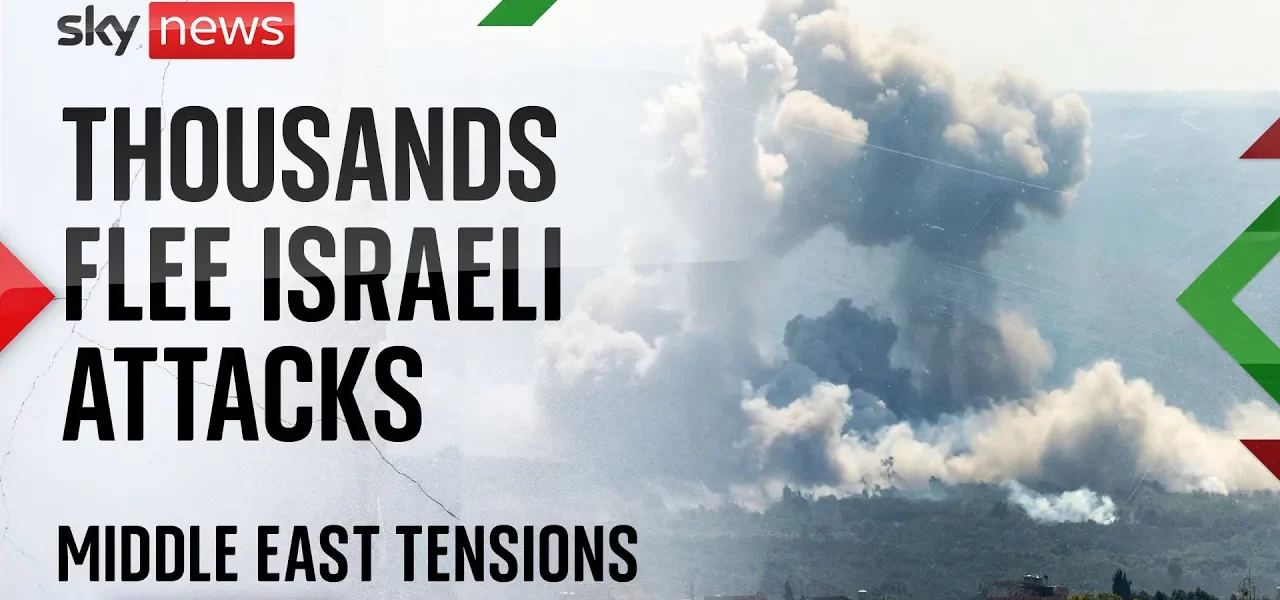Fiery Path to All-Out War: Israel’s Military Action in Southern Lebanon

The situation in Southern Lebanon has escalated dramatically as Israel has initiated a series of airstrikes targeting Hezbollah infrastructure. This article explores the implications of these military actions, the resulting humanitarian crisis, and the reactions from both sides, providing a comprehensive overview of this critical moment in the region.
Introduction to the Conflict
The recent military operations in Southern Lebanon mark a significant escalation in the ongoing tensions between Israel and Hezbollah. With a display of military power, Israel has launched a massive aerial bombardment aimed at crippling Hezbollah’s capabilities. This action has not only intensified the conflict but also raised serious humanitarian concerns, as civilian casualties mount and the threat of all-out war looms. The region, already fraught with instability, faces a dire situation as both military and non-combatant lives hang in the balance.
Overview of Israeli Airstrikes
Israel’s recent airstrikes have been characterized by their scale and intensity, targeting key ammunition and infrastructure associated with Hezbollah. These actions have generated a significant impact on the ground, leading to widespread fear and chaos among the civilian population.
The Targeting Strategy
Israeli Prime Minister has articulated a clear message regarding the objectives of these strikes:
- To dismantle Hezbollah’s military capabilities.
- To deter future attacks against Israel.
- To change the balance of power in the region.
Civilian Impact
Despite these military objectives, the civilian toll has been devastating:
- Hundreds reported dead, with thousands injured.
- Targeting of ambulances and medical facilities, exacerbating the humanitarian crisis.
- Large numbers of women and children among the casualties.
The Humanitarian Crisis Unfolding
The aftermath of the airstrikes has left thousands of civilians scrambling for safety. Many have fled their homes in search of refuge, and the healthcare system has been overwhelmed by the influx of casualties.
Evacuations and Displacement
In response to the escalating violence, residents received urgent evacuation instructions:
- Televised warnings from Israeli authorities advised civilians to flee.
- Many took to the roads, leading to chaotic scenes as families packed their belongings.
- Recorded messages in Arabic urged residents to move at least one kilometer away from Hezbollah sites.
Personal Accounts from Civilians
Witness accounts reveal the fear and uncertainty among the local population. For instance, a software engineer named Muhammad expressed his concerns:
- He and his friends received evacuation messages seriously.
- Despite his fondness for Beirut, safety became a priority.
- His family lives in the mountains, prompting him to prepare for a hasty departure.
Reactions from the Lebanese Government and Hezbollah
The reactions from various stakeholders highlight the complexity of the situation in Lebanon. The Lebanese Health Minister condemned the Israeli actions, emphasizing the civilian toll, while Hezbollah’s leadership vowed to continue their resistance.
Government Response
The Lebanese government’s response has been one of outrage and condemnation:
- Accusations of targeting civilians and infrastructure unrelated to Hezbollah.
- Calls for international intervention to address the humanitarian crisis.
Hezbollah’s Stance
Hezbollah remains defiant, with leadership proclaiming their commitment to fighting back against Israeli aggression, signaling that the conflict is far from over.
Conclusion
The military actions taken by Israel in Southern Lebanon represent a critical juncture in the ongoing conflict. As the situation deteriorates, the humanitarian impact cannot be overstated. With civilian lives at stake and both sides showing no signs of backing down, the international community must take notice and respond to the escalating crisis. It is crucial for those concerned about the future of the region to stay informed and engaged. For more insights and updates on this evolving situation, visit our related articles on Middle Eastern conflicts and humanitarian crises.
“`




